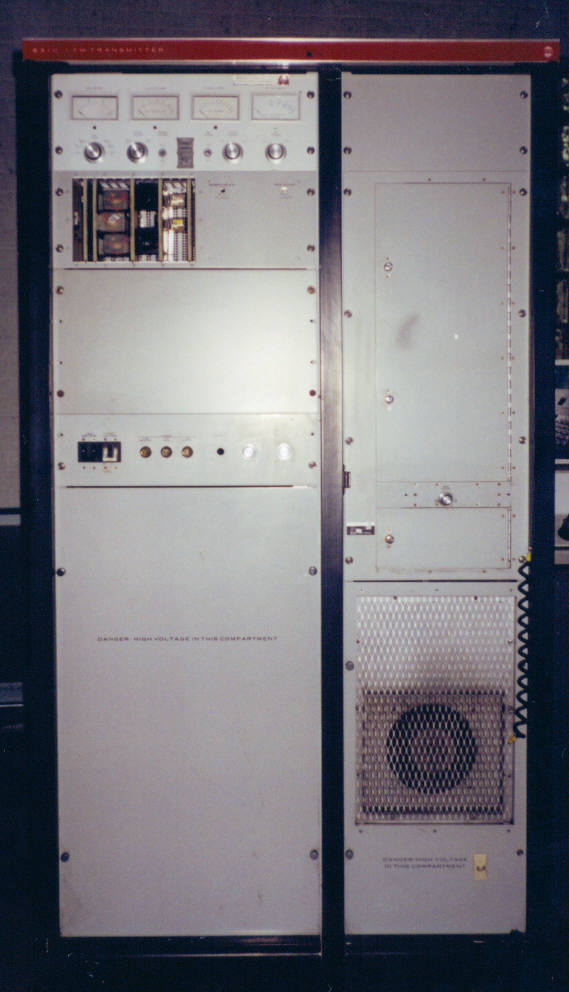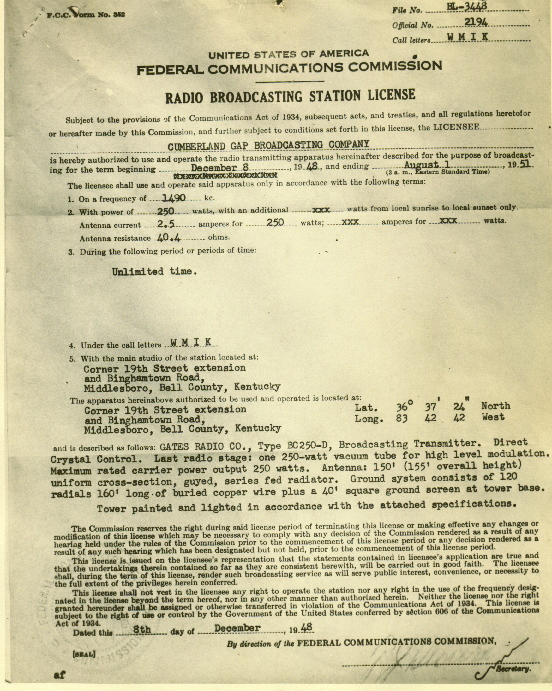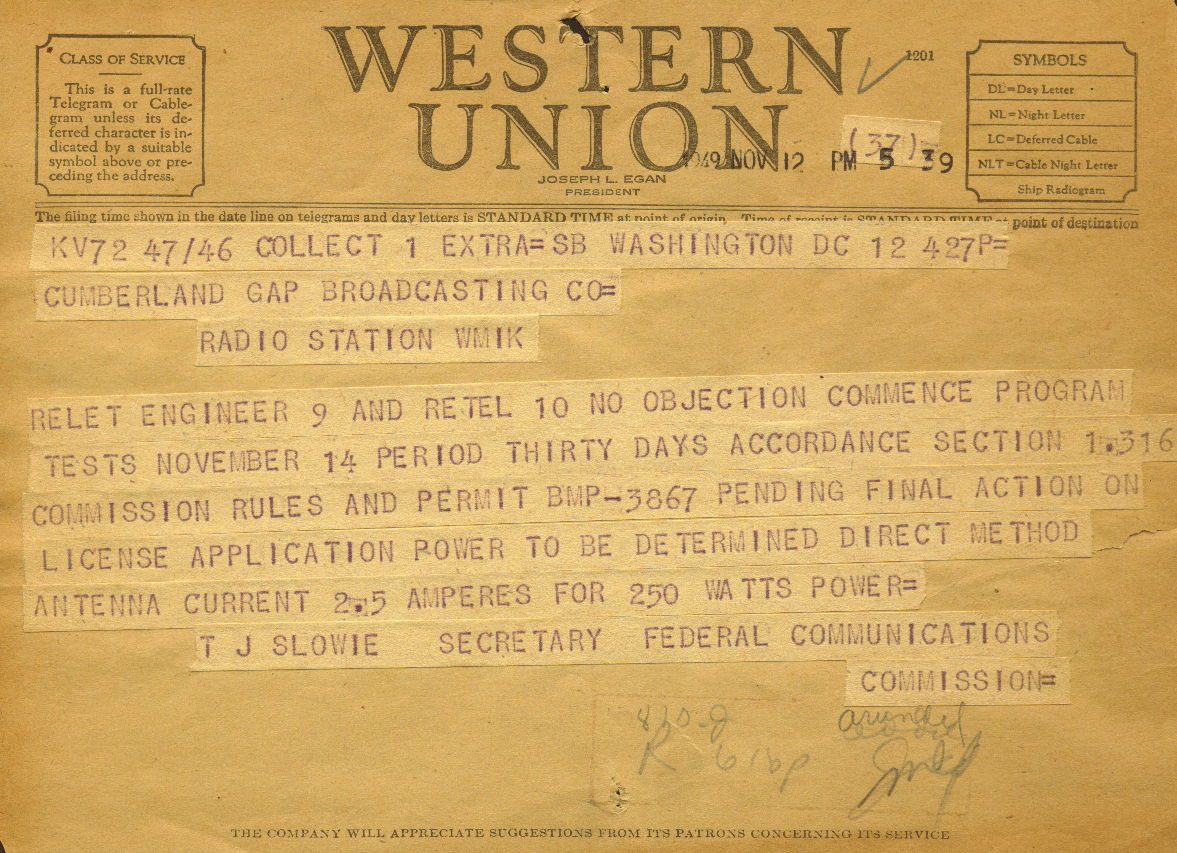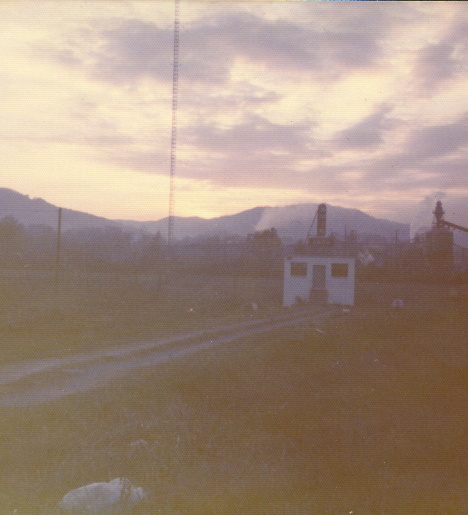My first recollection of anything technical at WMIK was one of complete awe and fascination. As a young boy of seventeen, everything I looked at during those first few weeks at the station totally amazed me, from the RCA ribbon microphones, to the Collins cartridge machines, and everything else. Without a doubt those days I stayed at the station to "learn the ropes" remain some of the most memorable and pleasant days of my life.
Fortunately, after getting a job at the station, I was able to spend days there learning everything (see my eventual biography on the employees page).
The station had been built in 1948 using the most advanced methods of the time. Every room had a Jenson Studio speaker connected to a Gates rack amp that piped in music. The Collins 212L console provided complete control of everything on the AM side, partial audio control of the FM during simulcasts, and after hours production room facilities. Early in 1973 a separate production room was built by converting a closet near the FM studio.
Altec condenser mics were used along with two original 16" Gates transcription turntables. The Collins cart machines finished the audio on the horseshoe desk. New ITC machines soon replaced the old "mu metal" Collins machines.
Just behind the desk were two 19" equipment racks, the original one and the FM rack that had been installed in 1971. The original rack housed an old Conelrad EBS unit, a Gates Sta-Level, a Gates frequency monitor, a Gates pulse type remote control unit, the Gates rack amp, a blank panel with a remote modulation meter, and many, many rows of telephone patch panels.
The FM rack housed a Collins FM modulation monitor, a pair of Collins 26U Limiters, a Collins frequency monitor, a Rust monitor that never worked, an Ampex 601 tape machine and more telephone patch panels.
Soon after I started work, a new Mosely TRC-15 Remote Control unit replaced the old Gates system. The Gates frequency monitor also retired when the FCC allowed for outside frequency measurements. I also remember having to take transmitter remote readings every thirty minutes, but that too ended a few months into the job when readings were taken every three hours.
The FM control room used a Sparta remote console for occasional broadcasting, along with an Altec microphone. The console was rarely used because the FM station was automated. Thatís where "Otto" comes into the picture. Otto was a very large automation unit using three rotating cart units, a very large Scully aluminum reel-to-reel unit, and a programmable brain. I have very little good to say about Otto. It didnít work very well unless one was there to make sure it did.
At ten years old, I may have been one of youngest pirate radio station operators in the United States back in 1965. My uncle Lige and I often broadcast late into the night. Thatís where I learned about transmitters.
With that in mind, the transmitter building housed all the good stuff. The AM transmitter was a Collins 20V3. It was a work of art, built like a tank, and glowed in the dark. If you have seen one you know what I mean. The FM transmitter was a Collins 831D-1. Unfortunately, it was never the trouble free unit that the 20V3 had been. There were always problems with the automatic power control as I recall. Supposedly, the transmitter was accidentally dropped from a truck in transit to Middlesboro. Whenever it quit and the station manager called me, that was the first thing I thought of.
(The photographs below were taken after the 831 was removed from service.)


The equipment rack housed only a few items. The other end of the Gates remote (later the Mosely), a homemade fail-safe unit, an old crank type telephone, more patch panels and thatís all I can remember.
There were all kinds of radio junk in there, and some very large hand tools and wrenches in an old workbench. I spent a lot of time there. It was a good place to go and get away from the world.
Middlesboro Mall now stands where the old WCPM/WMIK tower stood; the old building was near about where J.C. Penney is today. The photo below is from 1973. Who would have thought?







